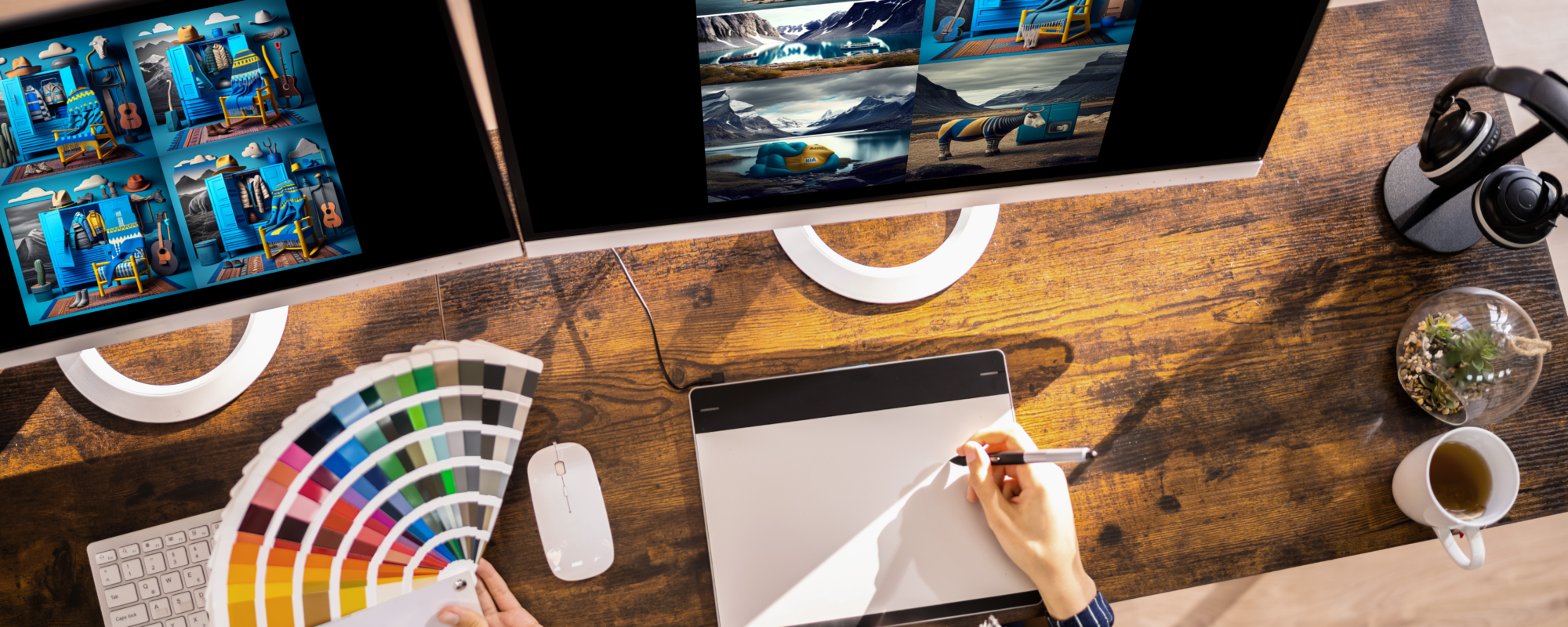
Design, like anything else, is greatly influenced by cultural, societal and global changes as well as shifts in consumer preferences. The pandemic has accelerated the digital development and the emergence of new design trends that will continue to shape the work of designers, the communication of brands, their interaction with consumers and the industry as a whole in 2023 and in the coming years.
At Brandpulse, we are embracing a progressive approach to our design processes by incorporating these trends into our work. We are excited to share the 5 topics that keep us thinking so far:
Given the buzz it has created, you probably heard about ChatGPT. Midjourney, DALL-E, Lexica Aperture are just a few more AI platforms to name.
Interestingly enough, in his 2016 TED Talk, Sam Harris mentioned a period of 50-100 years to think about and prepare for AI…We are now in the year 2023, so only 7 years later, and our LinkedIn pages have already been swarmed by creative approaches on this topic! Some brands are already working with AI: Martini using Midjourney to create visuals in their latest campaign “Unbottling Martini“ or the E-Bike start-up Sushi Bike promoting their latest models with artificially generated motifs of an astronaut.
At Brandpulse, we experimented with AI’s and working with them has definitely been a crazy ride into the future; a future that (before the pandemic) would have seemed like something out of a science fiction movie. By using it as an inspirational and research tool, AI technology will for sure be a huge accelerator for our creativity in the future, with the brief becoming more important than ever.
More and more brands are exploring virtual spaces, and hybrid events are on the rise. For example, Coca Cola decided to launch its newest flavor in the metaverse by the end of 2022 and fashion brands across the world are leveling up their efforts in gaming collabs — working with titles ranging from Minecraft to Fortnite (Burberry x Minecraft, Dior x Gran Turismo 7).
There will be a continuing shift towards brands being seen more as a connective platform in our lives, in the shape of media such as Twitch, TikTok, YouTube and Spotify. Virtual Reality will ultimately be edging into mainstream, and we will have to learn how to design in this fast-paced environment.
Yvon Chouinard’s decision to transform Patagonia into a foundation in 2022 made big news; the global outlook is obviously shifting from talking to doing. Therefore, innovation in sustainable design is set to boom further and demands scrutiny to ensure that brands are not just greenwashing to try to meet consumer expectations. Designers and companies are expected to optimize ethical sourcing, supply chains and choose materials that are sustainable, recyclable and have a low carbon impact. Ukrainian start-up Releaf Paper for example has developed a process for turning cellulose fibres derived from fallen leaves into paper packaging products, such as carrier bags.
Designwise, we are seeing a rising trend towards eco-friendly and rewilding initiatives, as well as the use of visual techniques featuring nature-inspired colour palettes and minimalist textures; all of this reinforced by messages that incite us to take action today.
In regards to the war in Ukraine and the change in trading routes and partners, the question arises if western agencies are still the “go to place” for new and wealthy brands emerging from Middle Eastern countries, China or India? Are we also capable delivering designs which match their aesthetic expectations and cultural background?
In the past 10 years, we have seen more and more brands uniforming in favour of a democratized, digital-first design. High-end icons have sacrificed eccentricity to broaden their appeal with aesthetic standards being set by tech start-ups and the popularity of sans-serif typography, stripped down design and reductionism. The driving force behind this trend being the prioritization of function over form: through simplification and minimalism it is easier to consistently implement across different media, multiple devices and different screen sizes. We are of course aware that this has led to seeing less differentiation and extravaganza in design. But we are now in times of societal uncertainty, and as history repeats itself, in times of uncertainty, nostalgia starts playing a bigger role again.
We gravitate towards signals of comfort – hence it is not surprising that some of the more celebrated rebrands leverage cues of more idyllic times. Think Burger King, Chobani and more recently Burberry. It’s about giving people symbols again that establish an emotional currency that can endure the test of time and convey a confident charismatic appeal. It’s about digging into heritage again, finding unique traits and making them relevant and transportable into the future and digital design standards.